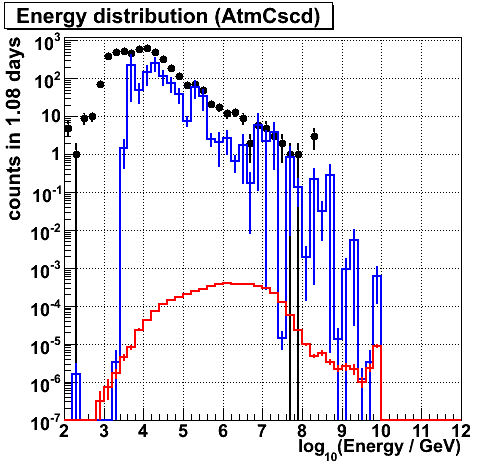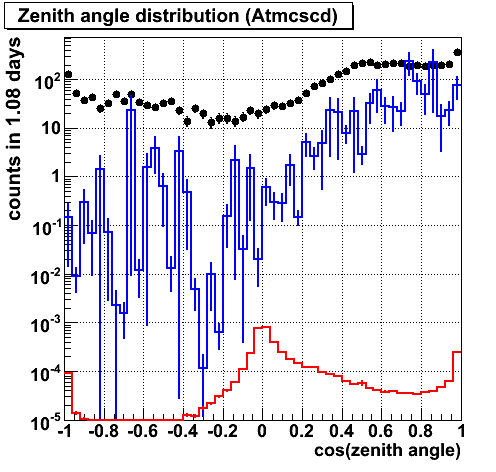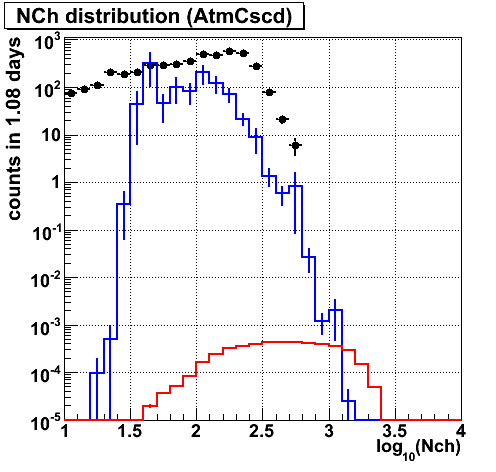Comparison between data and MC (IC79)

Here, I have shown several plots for the data and MC comparison for IC79 data.
This comparison will be essential for the separation of EHE neutrino signals
from backgrounds.
Parameters are looked for that have reasonable agreement between data and background MC,
but does different behavior between data and signal MC.
Used data
I have used EHE filter data whose condition is (portia) NPE is greater than one thousand.
The run number of 116180, 116200, 116210, 116220 were used for the observation data.
All of the data is the part of the burn sample.
The JULIeT data (100k each) are used for signals and HE CORSIKA data with iron primary (~20k) are used
for the backgrounds. The SPICE 1 tables are used for the generation.
Observational data check
|
The effective livetime is 1.078 days.
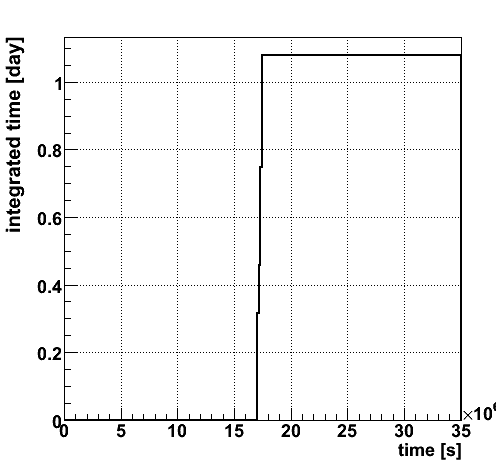
|
Time difference between events. Looks normal.
The rate is 1.46 Hz.
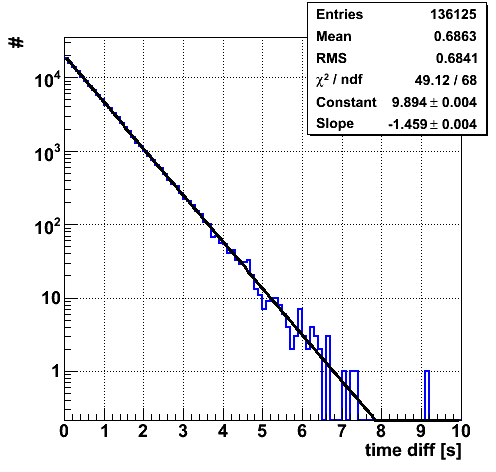
|
Data and MC comparison
In following plots, the colors mean
- black: observation data
- blue: HE CORSIKA (iron, SIBYLL)
- red: EHE signal sum (GZK (Shigeru et al))
- red: EHE signal (GZK) from mu
- red: EHE signal (GZK) from mu
- magenta: EHE signal (GZK) from tau
- green: EHE signal (GZK) from nue
- dashed red: EHE signal (GZK) from numu
- dashed magenta: EHE signal (GZK) from nutau
Fundamental plots
|
NPE agreements between data and background MC is nice.
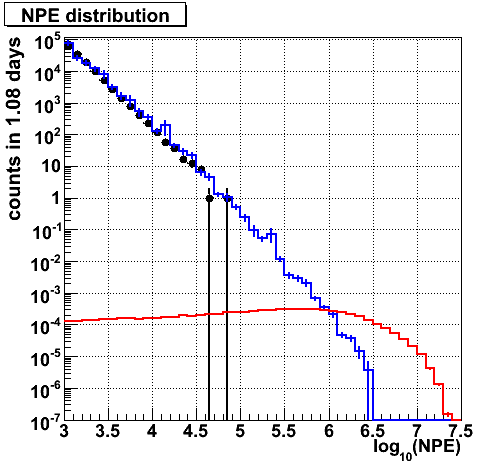
|
We see a difference in data and background MC
probably due to conincidents events.
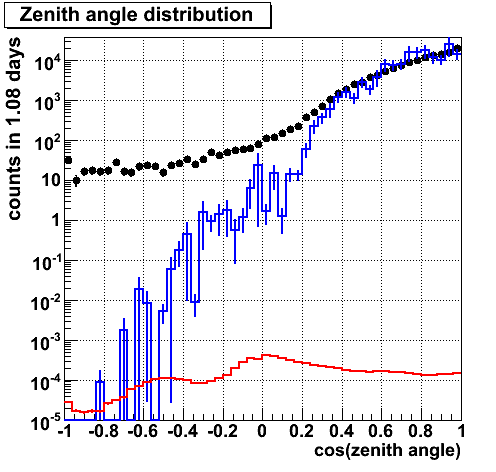
|
Distribution becomes clean when a condtion is put.
NDOM > 100 && CoGZ > -200m && NPE > 10^3.5
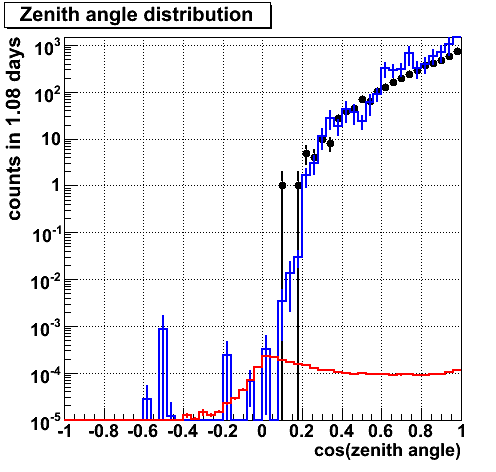
|
NDOM.
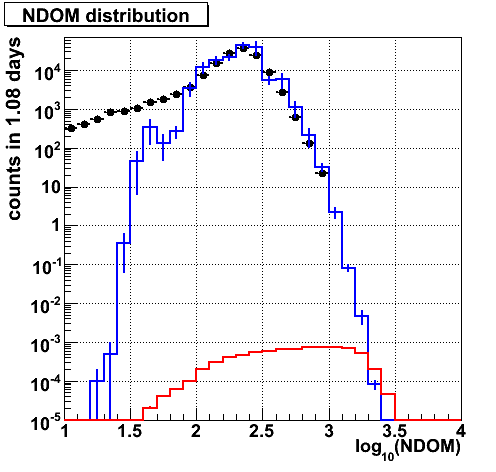
|
|
CoGX
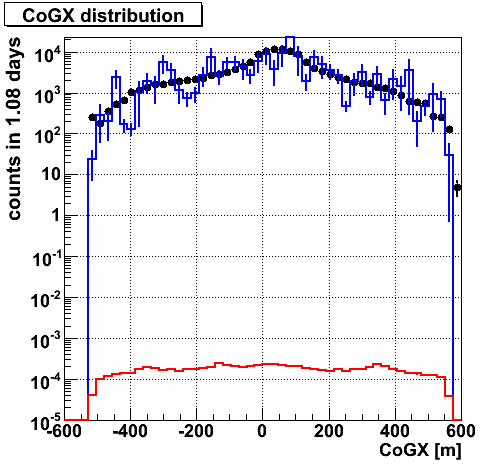
|
CoGY
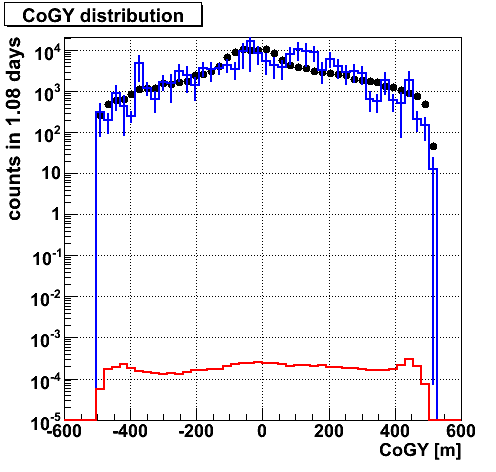
|
CoGZ. A difference seen at deeper place.
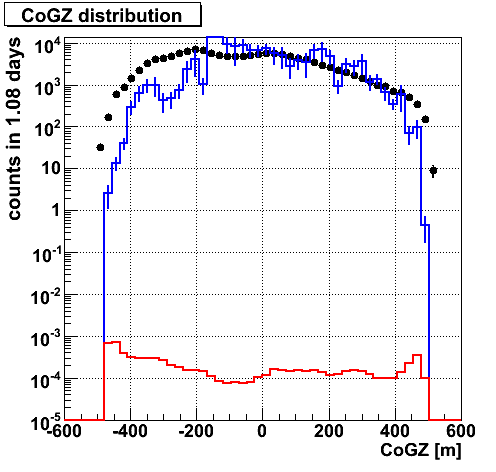
|
|
Closest distance. Agreement is nice.
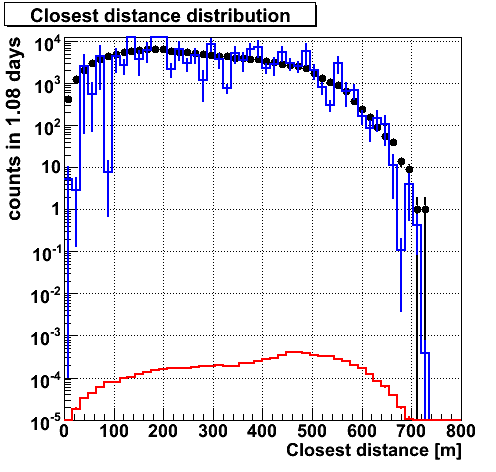
|
Closest distance for each contributions.
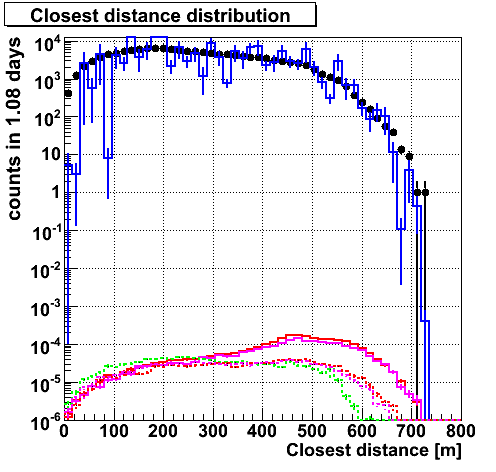
|
mpe, photorec, mue, etc
|
Energy (photorec). There is a tail for data.
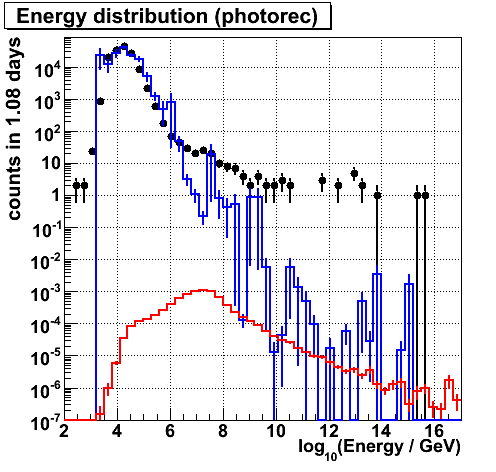
|
Energy (mue)
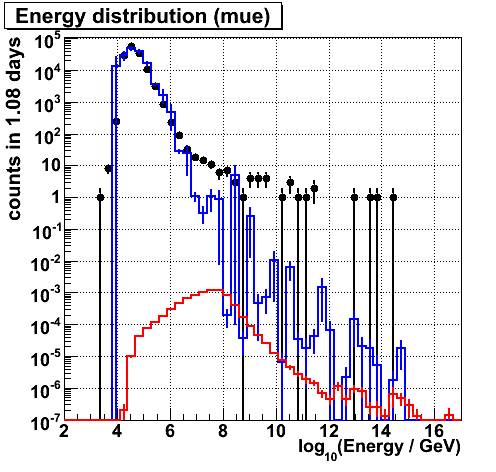
|
dE/dX
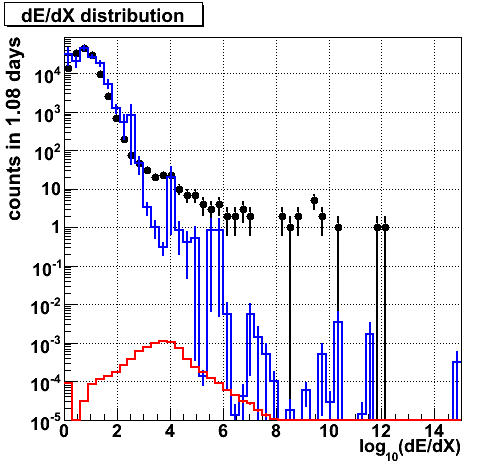
|
|
Energy (photorec). The tail reduced a bit.
NDOM > 100 && CoGZ > -200m && NPE > 10^3.5
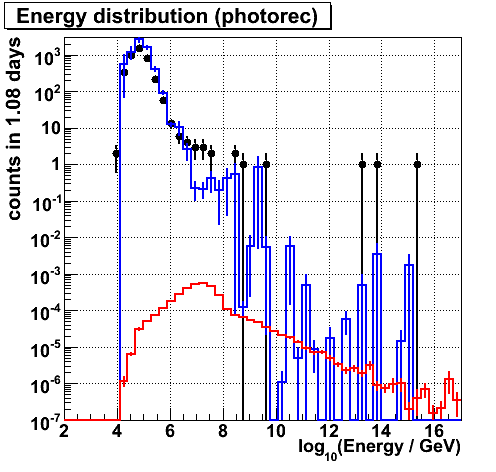
|
Energy (mue)
NDOM > 100 && CoGZ > -200m && NPE > 10^3.5
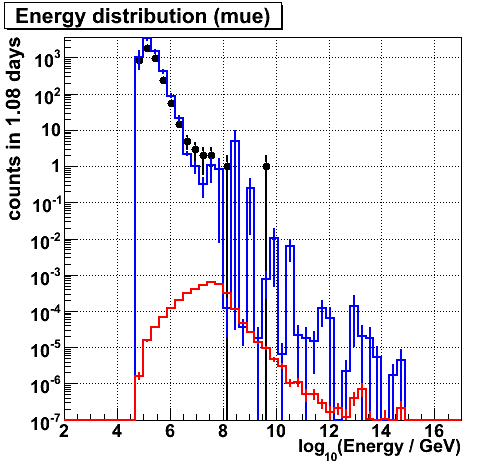
|
dE/dX
NDOM > 100 && CoGZ > -200m && NPE > 10^3.5
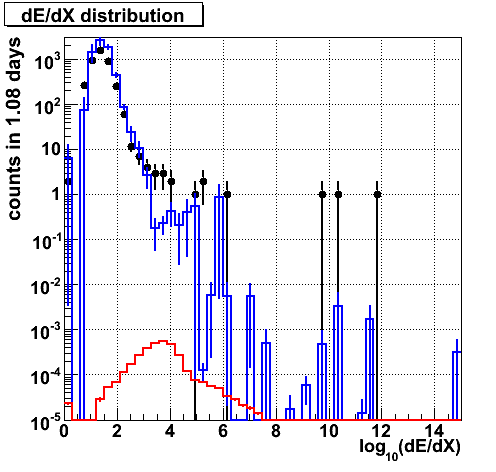
|
|
ZA (Linefit)
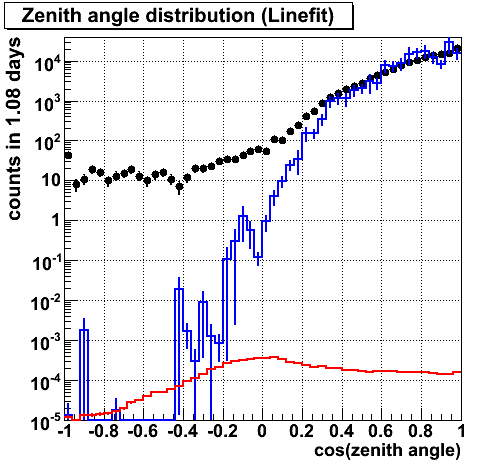
|
ZA (spe single)
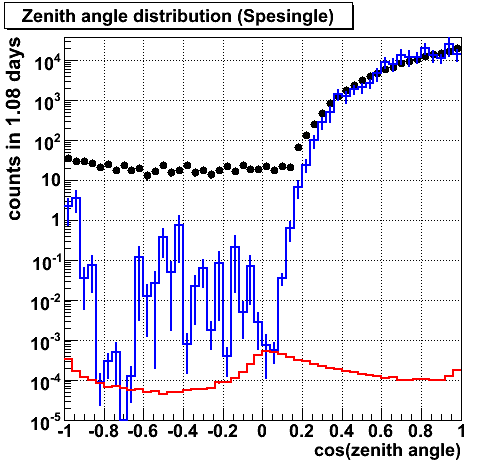
|
ZA (spe 4 iteration)
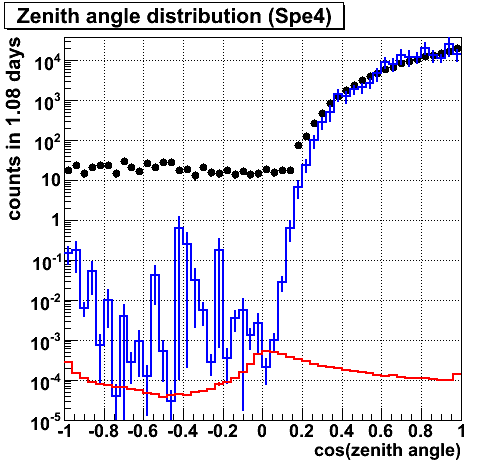
|
ZA (mpe)
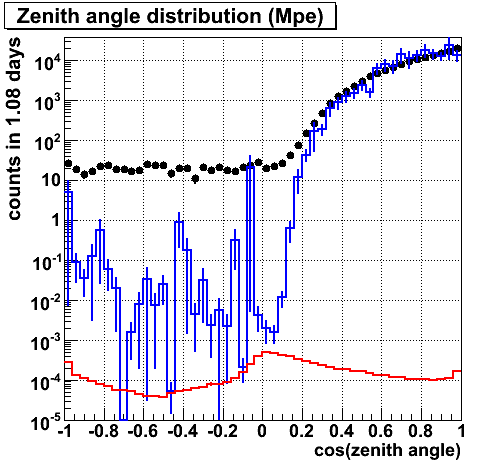
|
|
Linefit speed Z
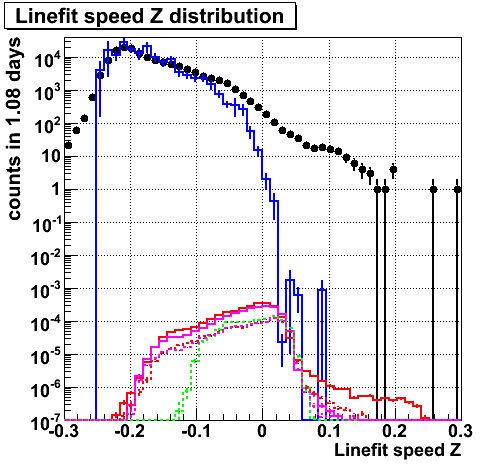
|
Cut values (mpe)
|
Ldir. This parameter also may be useful.
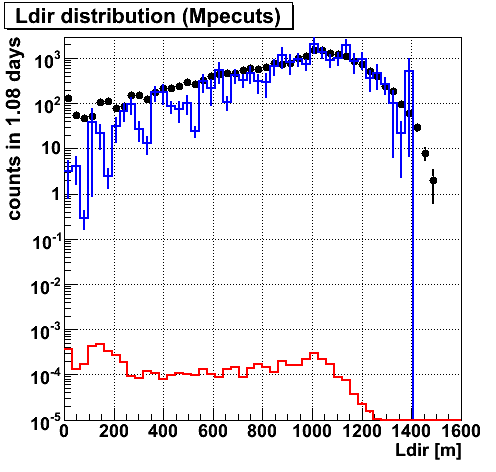
|
Ldir
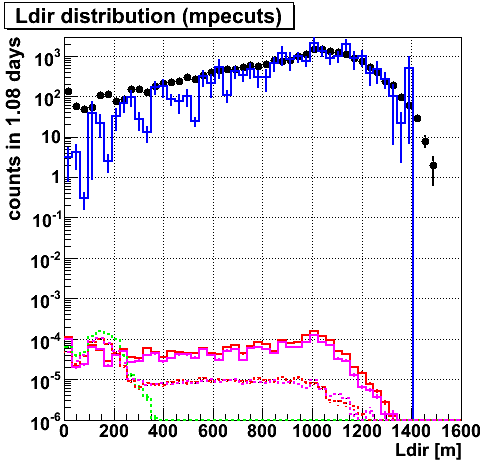
|
Ndir.
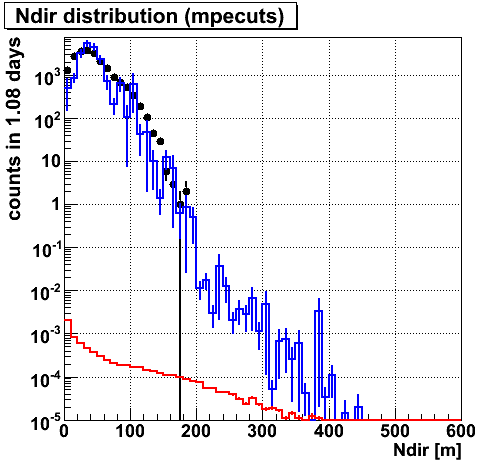
|
Ndir
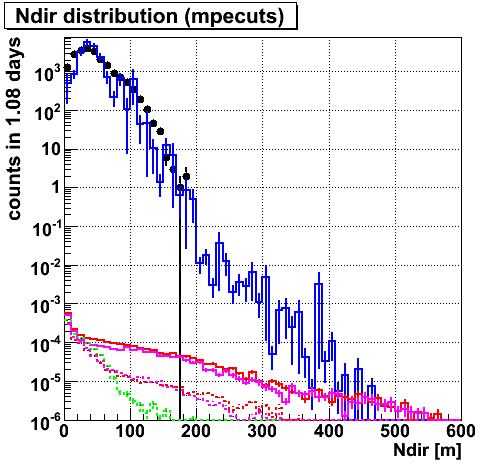
|
|
Log likelihood
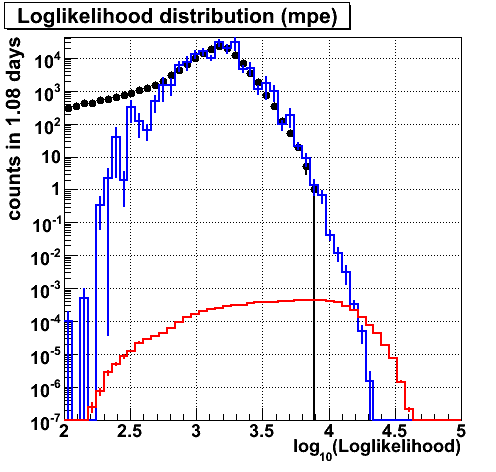
|
Log likelihood
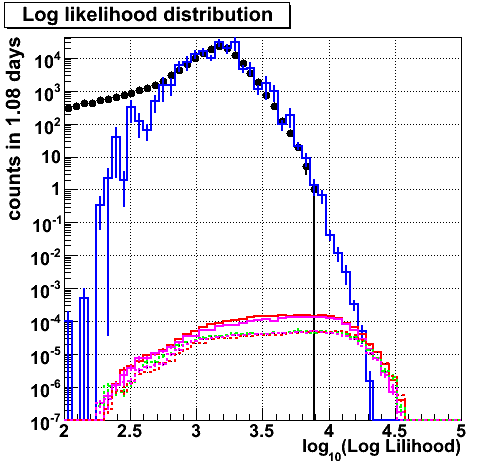
|
NDOF
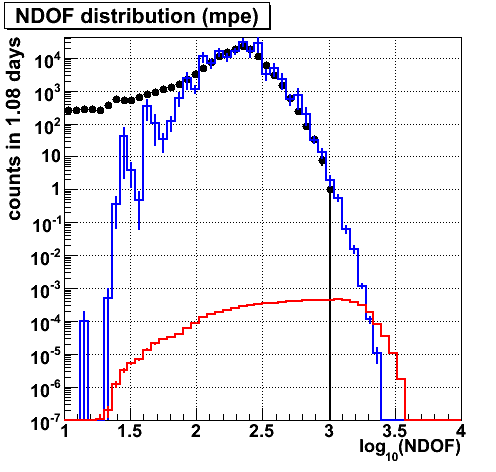
|
NDOF
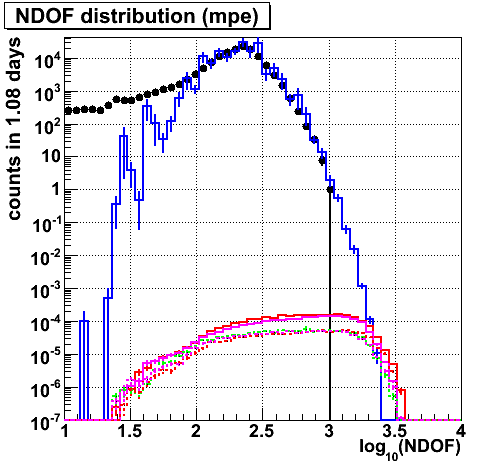
|
Ehe-star related parameter
Look at this page for ehe-star.
|
Area ratio
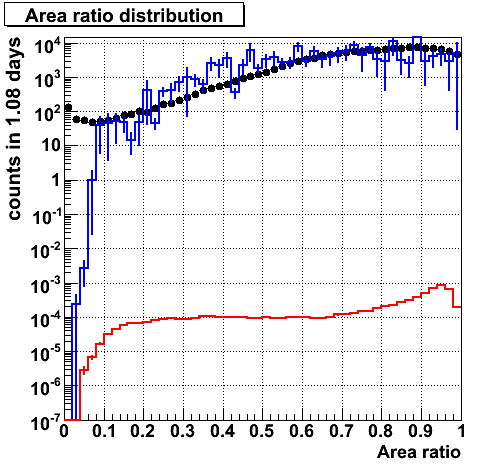
|
Area ratio from each components. nue give high area ratio.
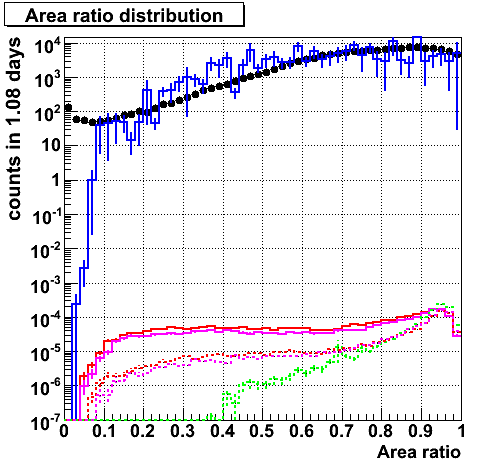
|
|
Gradient. Althouhg mismatch in bg, bg and
signal have different distributions.
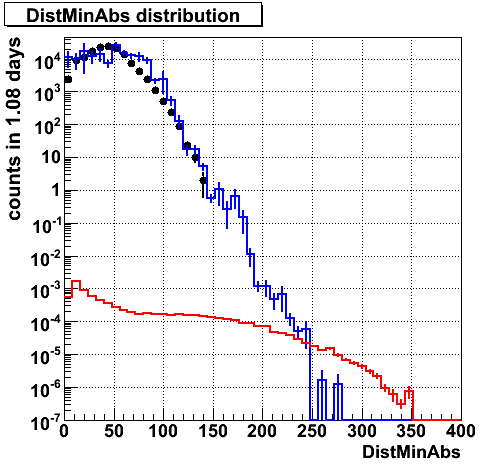
|
Gradient from each components. nue give high area ratio.
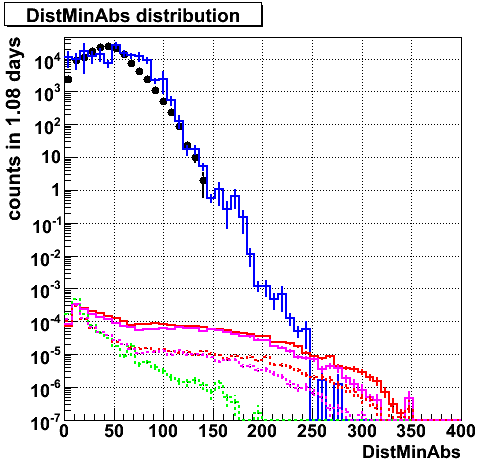
|
|
Gradient. Althouhg mismatch in bg, bg and
signal have different distributions.
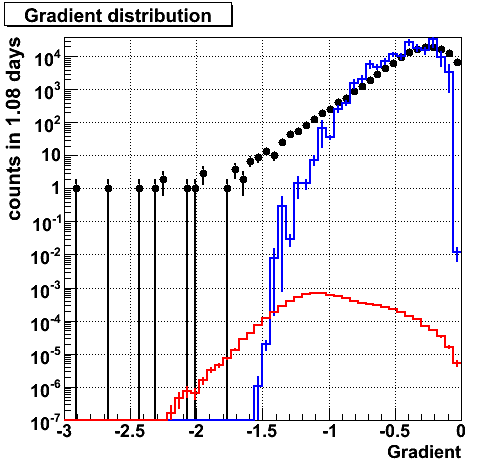
|
Gradient from each components. nue give high area ratio.
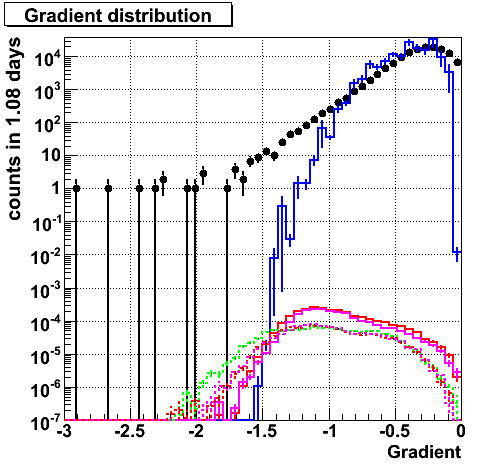
|
cascade related parameter
Zenith angle Vs NPE
Mis-reconstruction may be problematic...
|
Zenith angle Vs NPE (data)
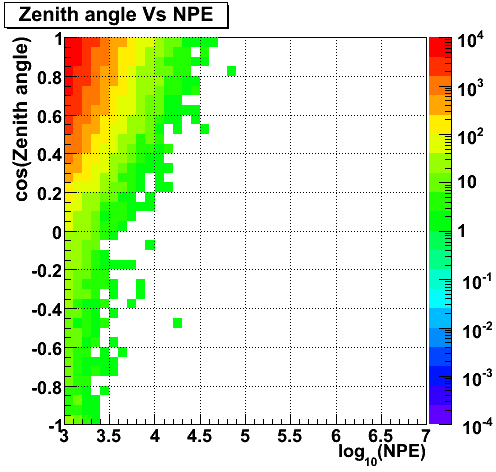
|
Zenith angle Vs NPE (CORSIKA)
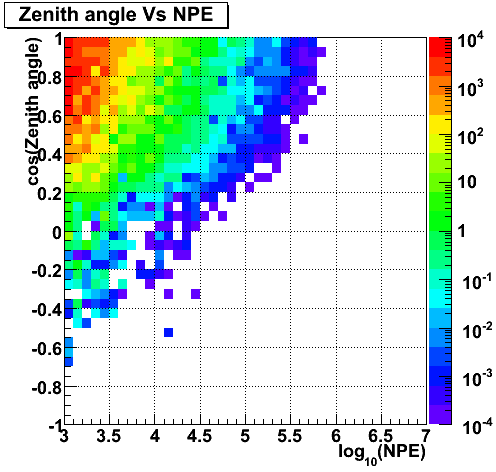
|
Zenith angle Vs NPE (GZK)
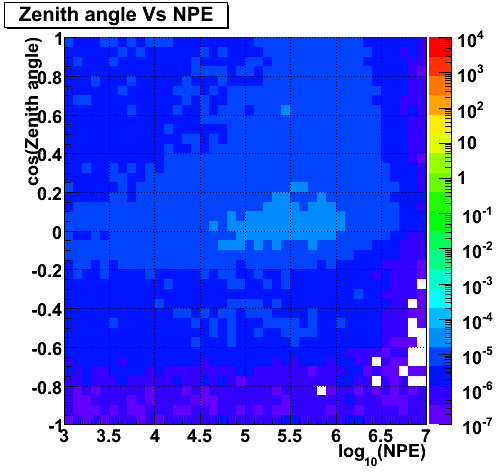
|
|
Zenith angle (mpe) Vs Energy (data)
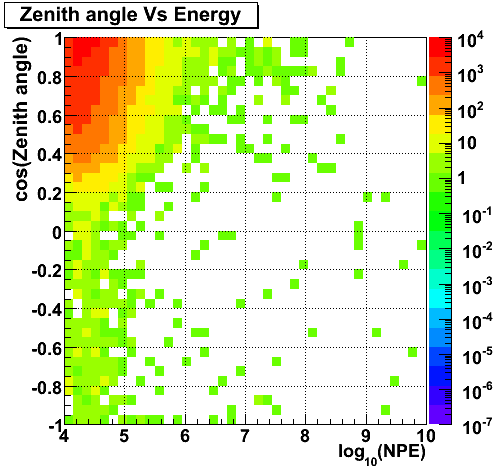
|
Zenith angle (mpe) Vs Energy (CORSIKA)
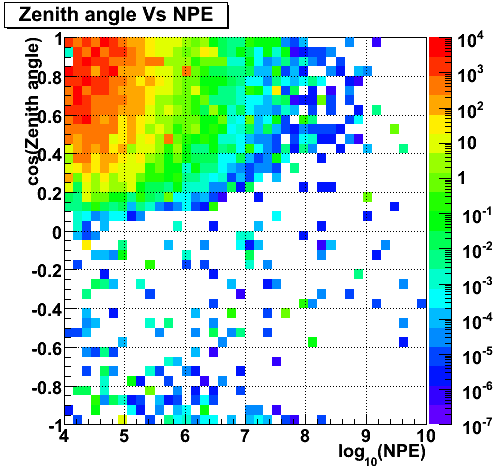
|
Zenith angle (mpe) Vs Energy (GZK)
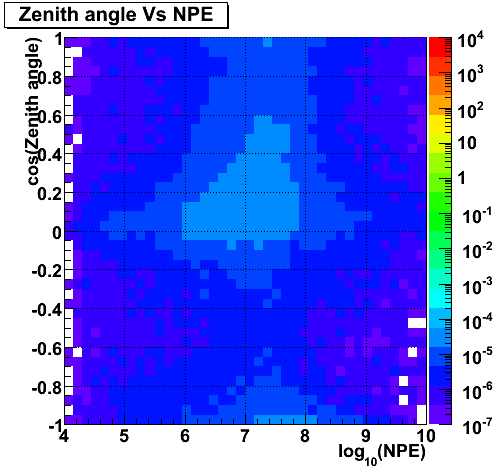
|
Summary and future plan
- Agreement between data and MC is relatively reasonable at this point without cuts.
- Some cleaning needed. (need for removing more coincident events)
- Mis-reconstruction of high level reconstruction may be a problematic. (need check after some cleaning.)
- Some parameters seem to be useful for sig/bg separation. (closest distance, Ldir, area ratio, gradient and so on) The differences are based on that fact that neutrino can have a starting track (or/and cascades).
- Other intrinsic difference between muon bundles and single track should also be investigated such as difference of dE/dX at start point and at the end point. (Budles lose its energy faster.)
Sophisticated reconstruction leads to mis-reconstructions that should be avoided. So, we may not
be able to use the results. Although, I like to improve energy informaiton with probably timming
information (spread of hit time). With that information, the distance to a track can be estimated,
so that it will lead better energy estimation.
- I will use Random Forest method (decision tree). The method tells us which parameter is useful
for the separation.
- I can make a "supercuts" with the parameters by taking into account some varable dependence
such as energy information, but the random forest method automatically takes into accounts
such dependences, so it may be convenient and more powerful.
Keiichi Mase
Last modified: Mon Aug 20 17:45:19 JST 2007












